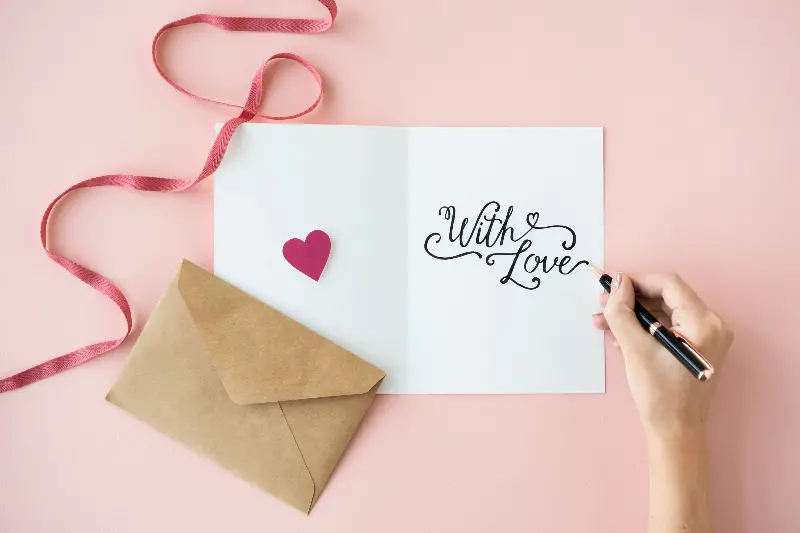Cultivating gratitude in a world that runs at full speed can feel challenging, but a heartfelt thank you letter never goes out of style. Whether you want to show appreciation to family members or thank a colleague for their support, handwritten or thoughtfully typed notes continue to make a lasting impact. Small gestures of gratitude build stronger connections, nurture relationships, and remind people that their kindness matters. Here are seven heartfelt ways to craft meaningful thank you letters to both family and colleagues.

Personal Touch Matters
Generic thank you letters can fall flat, but adding personal touches brings your words to life. Start by addressing the person by name and recalling a specific moment or gesture you appreciated. For example, mention how your brother listened to you after a tough day, or how your coworker stayed late to help you meet a deadline. Reliving these memories together not only makes your gratitude feel sincere but also strengthens your bond.
Try mentioning details like shared jokes or a saying that you both find funny. For family, reference cherished rituals or a tradition you hold dear; for colleagues, a nod to a successful project can show attentive appreciation. A single line showing you noticed and valued their effort can turn a simple thank you into a cherished memento.
Highlight the Impact
Expressing gratitude is more powerful when you explain how the other person’s actions affected you. Instead of simply saying “thanks for your help,” share how their support eased your workload, brightened your mood, or taught you something valuable. Telling your sibling, “Your advice gave me clarity when I felt lost,” or sharing with a teammate, “Your encouragement made that presentation feel less daunting,” makes your thank you letter both meaningful and memorable.
Acknowledging impact can be especially motivating in the workplace, where colleagues might not realize the ripple effects of their support. In families, this recognition often deepens mutual understanding and appreciation, strengthening the emotional ties that bind.

Be Authentic and Sincere
People can sense the difference between a routine thank you and one filled with authenticity. Don’t hesitate to let your feelings show and write in your natural voice. Whether you’re shy or effusive, write the way you speak to ensure your gratitude sounds genuine.
It can be tempting to adopt formal or flowery language, especially in professional settings, but sincerity stands out. Even a simple, honest statement like, “I truly appreciate your guidance during the project,” can ring more authentic than elaborate prose. For family, letting a bit of vulnerability come through—“I don’t always say this, but your kindness means the world to me”—creates warmth and connection.
Use Creative Formats
A thank you letter doesn't have to be confined to stationery or email. Consider creative formats to surprise and delight the recipient. Slide a handwritten note into a lunchbox, leave a sticky note on your colleague's monitor, or use a digital tool to customize a brief video. Some families enjoy scrapbooking thank you notes together, preserving memories and written tokens in one place.
For workplace thank yous, use a team chat with a thoughtful message, or decorate a shared whiteboard with words of appreciation. A touch of creativity makes your note stand out and shows you invested extra time, making your gratitude even more special.

Timing Is Everything
The best thank you letters arrive soon after the act of kindness, while memories are still fresh. Quick feedback is powerful, especially in professional contexts where feedback cycles tend to be long. Sending a thank you note right after a meeting, family gathering, or a colleague's special effort reinforces their positive actions and boosts the recipient’s morale.
If you missed the ideal window, remember that a late thank you is always better than none. Adding a brief apology for the delay can put the recipient at ease: “I’ve been meaning to tell you—your support last month truly made a difference.” Gratitude doesn’t have an expiration date, and often, surprise notes are extra sweet when unexpected.
End With a Wish or Offer
Conclude your thank you letter by looking forward. In families, this might mean expressing excitement about a future visit or planning a shared activity. For a colleague, offer your own support: “Let me know if I can ever return the favor,” or “Looking forward to tackling new challenges together.” These closing lines leave the relationship open, promising continued connection and kindness.
An invitation or offer at the end of your letter pulls your gratitude into the future, reminding the other person you’re ready to reciprocate and continue growing the relationship.
Make It a Habit
Writing thank you letters should not be reserved for grand gestures or annual events. Making it a regular part of your communication strengthens appreciation as part of your family or work culture. Recognize birthdays, anniversaries of shared achievements, or moments of unexpected help. When expressions of gratitude become routine, they foster more meaningful relationships at home and in the workplace.
Encouraging others to join you can amplify the effect—maybe introduce a gratitude circle in your team or suggest a weekly thank you ritual in your family. Over time, the culture of appreciation grows, nurturing both individual happiness and collective resilience.
In a digital age, heartfelt thank you letters—rich with personal memories, thoughtful reflections, and sincere good wishes—are more invaluable than ever. Their power to bring people closer, to uplift, and to inspire is timeless. Whether between siblings or colleagues, a thoughtful note of appreciation not only honors kindness but also sows the seeds for deeper, more resilient relationships.
